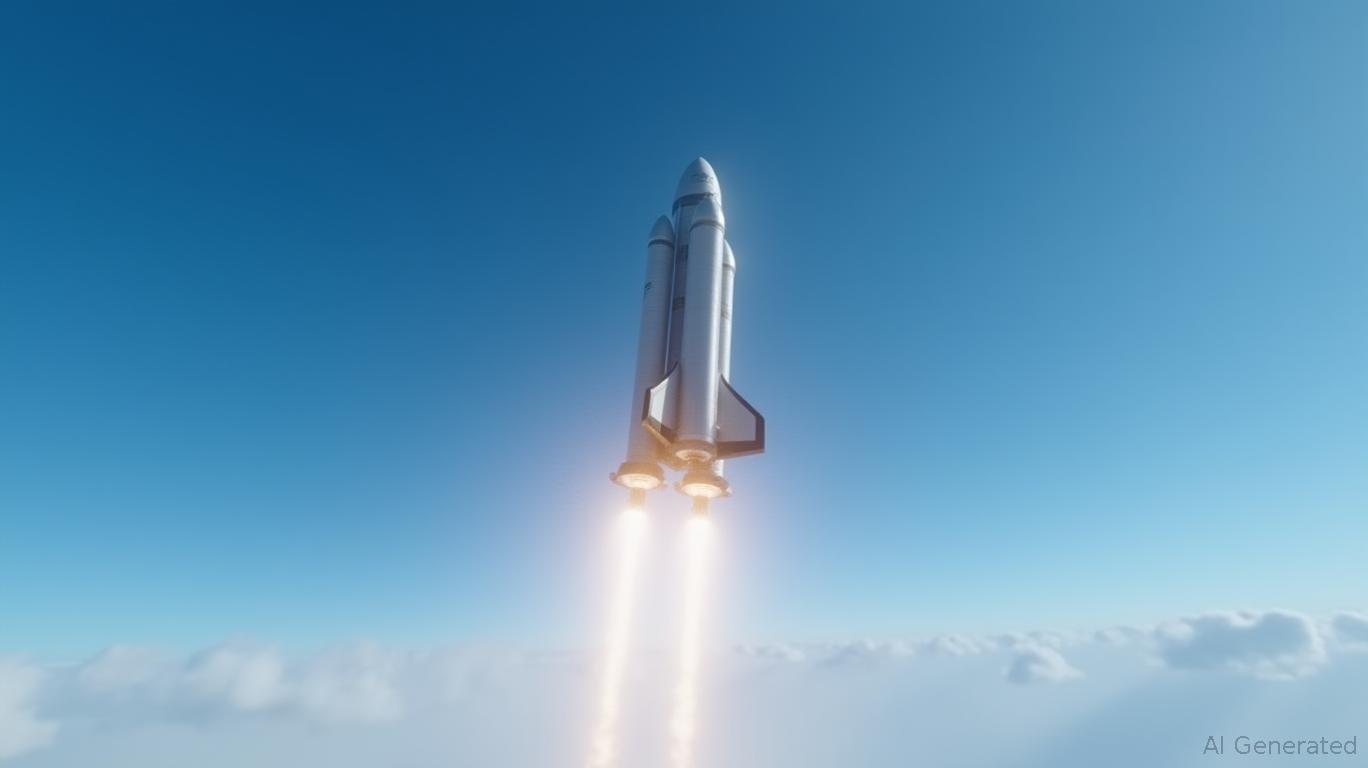Mars or Bust? Navigating Investment in SpaceX's Ambitious 2026 Mission
The race to Mars is heating up. SpaceX's Starship, the rocket designed to carry humans to the Red Planet, recently completed its ninth test flight—a mixed success that underscores both the promise and peril of Elon Musk's 2026 deadline. For investors, the question is clear: Can this timeline hold, and what opportunities exist in the supply chain, robotics, and infrastructure needed to make it happen? While the Mars goal remains fraught with execution risks, the path to profit lies not in betting on distant deadlines but in backing the enablers of space exploration with near-term applications.
The Strategic Opportunity: Building the Space Economy's Backbone
SpaceX's Mars vision hinges on three pillars: advanced aerospace materials, autonomous robotics, and orbital refueling infrastructure. These sectors are already generating demand, even as the 2026 deadline faces skepticism.
1. Aerospace Materials: The Unsung Heroes of Space Travel
The Starship's success depends on lightweight, heat-resistant composites and alloys. Companies supplying these materials—such as Hexcel (HXL) for carbon fiber, Allegheny Technologies (ATI) for titanium, and Haynes International (HAYN) for superalloys—are critical to spacecraft durability.

While SpaceX's recent test flight failed to achieve a soft landing, each iteration improves material science. For instance, the ninth test's propellant leak highlighted the need for better seals and thermal shielding, directly benefiting suppliers who can meet these demands. With NASA's Artemis program requiring similar materials for lunar landers, this sector's growth is already baked in, regardless of Mars timelines.
2. Robotics: Tesla's Optimus Meets the Final Frontier
Autonomous robots like Tesla's Optimus could be adapted for Mars missions, handling maintenance, mining, or construction in harsh environments. Companies like Boston Dynamics (acquired by Hyundai) and iRobot (IRBT) are pioneers in this space, but specialized firms such as Astrobotic and Blue Robotics are already developing lunar rovers and submersible drones for space.
The payoff? Robotics could reduce the need for human labor on Mars, lowering costs and risks. Even if Musk's 2026 deadline slips, demand for robotics in lunar missions or satellite servicing will grow.
3. Orbital Refueling: The Fuel Stations of the Final Frontier
Orbital refueling startups like Orbital Reef (a joint venture with Blue Origin) and Relativity Space aim to create space-based fuel depots, cutting costs by eliminating the need to launch all propellant from Earth. This is a $10B+ market by 2030, per analysts at Space Capital.
The Risks: Test Failures and the Illusion of Timelines
Despite the optimism, SpaceX's Mars ambitions face daunting hurdles. The ninth Starship test's disintegration during reentry—a recurring issue—spotlights technical challenges. As Lori Garver, former NASA deputy administrator, noted, “SpaceX is pushing boundaries, but results are not what we hoped for.”
The 2026 deadline itself is already delayed: Musk initially targeted 2024 for uncrewed missions. Analysts warn that overestimating timelines could lead to investor disappointment. Risks include:
- Propulsion reliability: The Raptor engine's performance remains unproven at scale.
- Regulatory and safety hurdles: Manned Mars missions require certifications that could take years.
- Funding strains: SpaceX's $10B+ investment in Starship may divert resources from other priorities.
Invest in the Near Term, Not the Moonshot
The key to profitable investment is avoiding the trap of tying bets to Mars' 2026 deadline. Instead, focus on companies whose technologies are already in demand for lunar missions, satellite servicing, and orbital infrastructure—markets with clearer timelines and contractual certainty.
For example:
- Orbital ATK (now part of Northrop Grumman) supplies NASA's Artemis program with lunar modules, a $3B+ contract.
- Ball Aerospace (BA) and Maxar Technologies (MAXR) are building satellites and robotics for NASA and commercial clients.
- Sierra Nevada Corporation, developing the Dream Chaser spaceplane, benefits from NASA partnerships and reusable tech.
Conclusion: Cautionary Optimism
SpaceX's Mars mission is a visionary goal, but investors must separate signal from hype. The real value lies in the supply chains, robotics, and infrastructure that enable space exploration regardless of deadlines. While the Red Planet remains a distant prize, the companies building the tools to reach it—and the moon, asteroids, and satellites in between—are already on a trajectory to profit.
For now, bet on the enablers, not the moonshot itself. The next decade will belong not to those who chase Mars, but to those who build the road to get there.
Disclosure: This article is for informational purposes only and does not constitute investment advice. Past performance is not indicative of future results.

Comments
No comments yet